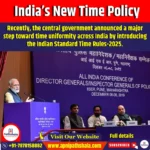Why Right to Die in the News?
The Ministry of Health and Family Welfare has issued draft guidelines to implement the Supreme Court’s 2018 and 2023 rulings regarding the right to die with dignity, aiming to provide a clear process for the withdrawal of life support for terminally ill patients. These guidelines establish a standardized framework for states and healthcare facilities to follow when withdrawing life-sustaining treatment, underscoring the legality of such actions within a regulated structure, even though India lacks specific legislation for the withdrawal of life support.
Key Topics Covered
- Definition and Process of Withholding or Withdrawing Life-Sustaining Treatment
- Euthanasia or “Mercy Killing”
- The Concept of a Living Will
- Procedures for Medical Decisions on Life-Sustaining Treatment Withdrawal
Understanding Withholding or Withdrawing Life-Sustaining Treatment
Withholding or withdrawing life-sustaining treatment involves stopping medical interventions like ventilators and feeding tubes when they no longer improve a patient’s prognosis and merely extend suffering. These treatments act as substitutes for essential bodily functions and are discontinued to allow the natural course of the illness, prioritizing comfort care and symptomatic relief.
- Right to Refuse Medical Treatment
The right to refuse medical treatment is a well-recognized principle in common law and has been upheld as a fundamental right under Article 21 of the Indian Constitution. This was formally established in the 2018 Supreme Court ruling in Common Cause vs Union of India. This right allows patients to refuse life-sustaining treatment even if it may result in death.
- Procedures for Withholding or Withdrawing Life Support
- Patient Consent: Patients capable of making decisions can refuse treatment directly.
- Advance Directives/Living Wills: Patients can specify their wishes for future care in a living will, which can guide decisions if they lose capacity.
- For Incapacitated Patients Without a Living Will: In cases where the patient lacks decision-making ability and does not have a living will, doctors may recommend withholding or withdrawing treatment if no recovery is possible, and further intervention would only extend the dying process.
Euthanasia or ‘Mercy Killing’ in India
- Clarifying “Passive Euthanasia”
Euthanasia generally involves actively ending a terminally ill patient’s life to alleviate suffering. In India, the term “passive euthanasia” is often used to refer to the withholding or withdrawal of life-sustaining treatment, though this terminology can lead to public confusion and misinterpretations of the right to die with dignity. The Indian Council of Medical Research (ICMR) noted in a 2018 glossary that the term is commonly misunderstood and lacks broad acceptance. - Withdrawal of Life Support and DNAR Orders
Withdrawing life-sustaining interventions can include “do-not-attempt-resuscitation” (DNAR) orders. A DNAR limits resuscitation efforts but does not mean other treatments stop. The order is decided through discussions between the physician and the patient or family. - Misconception of “Giving Up” on the Patient
Choosing to discontinue life-sustaining treatment is not an act of abandoning the patient but a decision to prevent further suffering when recovery is no longer achievable. In such cases, the emphasis is placed on palliative care to provide comfort. When patients are discharged without proper guidance, it can increase suffering for both the patient and family.
Living Will
Purpose and Guidelines
A living will, formalized by the Supreme Court in 2018 and simplified in 2023, supports the right to die with dignity by enabling individuals aged 18 and above to specify their treatment preferences if they become incapacitated. The will must designate two surrogate decision-makers, and to be legally valid, it needs to be signed in the presence of an executor, two witnesses, and attested by a notary or a gazetted officer.
Medical Procedure for Withholding or Withdrawing Life-Sustaining Treatment
- Supreme Court’s Structured Guidelines
The Supreme Court’s framework for withdrawing life support emphasizes the legal and ethical obligations of both doctors and patients, including independent expert evaluation and the involvement of family members or surrogates.
- Primary Medical Board Assessment
A Primary Medical Board is formed at the hospital, comprising the treating doctor and two experts in the relevant field, each with at least five years of experience. This board assesses the patient’s condition to determine if withdrawing life-sustaining treatment is appropriate. - Secondary Medical Board Review
A Secondary Medical Board, independent of the Primary Board, is constituted to review the initial recommendation. This board includes a doctor appointed by the district Chief Medical Officer and two additional experts. - Consent from Family or Surrogates
Consent from the patient’s designated representatives or, if unavailable, family members is mandatory before withdrawing or withholding treatment. - Judicial Notification
The decision to withdraw life support must be communicated to the local judicial magistrate by the hospital to ensure legal transparency. - Ethical Responsibilities and Shared Decision-Making
This structured process promotes “shared decision-making” among the medical team, family, and surrogates, protecting doctors from sole accountability while respecting the patient’s autonomy, family concerns, and ethical standards.
Conclusion
The draft guidelines affirm the right to die with dignity within a structured framework, addressing medical, ethical, and legal aspects. By allowing patients greater control over end-of-life care and establishing clear procedures for healthcare providers, India moves closer to providing terminally ill patients with compassionate, dignified care aligned with the Supreme Court’s rulings.
Explore our Books: https://apnipathshala.com/product-category/books/
Explore Our test Series: https://tests.apnipathshala.com/









